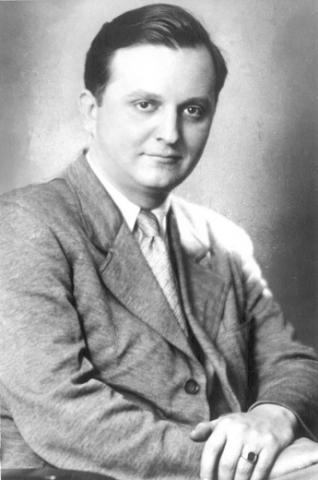Heinrich Klapsia studied art history, history and archaeology at the University of Vienna. After his thesis on "The early years of Lorenzo Lotto" (1930) and parallel to the completion of a work for the Institut für Österreichische Geschichtsforschung (Institute of Austrian Historical Research) on the administrative history of the Habsburg art collections (1931), he worked as an assistant at the Kunsthistorisches Museum in Vienna during the installation of the Figdor collection in the Neue Burg, in the weapons collection and the Collection of Sculpture, Arts and Crafts. In 1934 he was appointed as temporary research assistant, obtaining a permanent position in 1937. A supporter of National Socialism even before 1938, he was promoted to the ranks of senior civil servants and was involved in the installation of the Collection of Historic Musical Instruments in Palais Pallavicini. He was a member of the Reichskolonialbund (Reich Colonial League) and, alongside Rudolf Noll, representative in the museum of the Reichsbund Deutscher Beamter (Reich Association of German Civil Servants). In Klosterneuburg he catalogued goldsmiths' works and was responsible for the reorganization of the abbey's collections, which from June 1941 were supervised by the Kunsthistorisches Museum. From autumn 1942 he was the senior officer, together with the administrative official Johann Waldum, in charge of the art and cultural objects stored in the abbey. After being exempted from military service several times, Klapsia applied for admission to the Waffen-SS, but was rejected on health grounds. In 1943 he became temporary director and in 1944 permanent director of the Collection of Sculpture, Arts and Crafts. In late August 1944 he was finally conscripted into the German Wehrmacht. He died three weeks before the end of the war in Gerersdorf.
Heinrich Klapsia

Herbert Haupt, Das Kunsthistorische Museum. Die Geschichte des Hauses am Ring. Hundert Jahre im Spiegel historischer Ereignisse. Wien 1991.
Herbert Haupt, Jahre der Gefährdung. Das Kunsthistorische Museum 1938–1945. Wien 1995.
Susanne Hehenberger/Monika Löscher, "Geheime" Bergungsorte: das Rothschildsche Jagdschloss Steinbach bei Göstling (Jagd), die Kartause Gaming (Schloss), das aufgelassene Stift Klosterneuburg (Stift) und das Salzbergwerk Lauffen bei Bad lschl (Berg). Arbeitsalltag – Sicherheitsvorkehrungen – Rückbergungen, in: Pia Schölnberger/Sabine Loitfellner (Hg.), Bergung von Kulturgut im Nationalsozialismus. Mythen – Hintergründe – Auswirkungen (= Schriftenreihe der Kommission für Provenienzforschung 6), Wien-Köln-Weimar 2016, 35–68, URL: doi.org/10.7767/9783205201564-004.
Heinrich Klapsia, Die Anfänge des Lorenzo Lotto, Dissertation Universität Wien 1930.
Heinrich Klapsia, Entwurf einer Verwaltungsgeschichte der habsburgischen Kunstsammlungen, Hausarbeit am Institut für Österreichische Geschichtsforschung 1931.
Heinrich Klapsia, Hausmusik. Kunsthistorisches Museum, Sonderschau in der Neuen Burg, Wien 1941.
Heinrich Klapsia, Benvenuto Cellini, Burg bei M. 1943.
Verschiedene Beiträge im Jahrbuch der kunsthistorischen Sammlungen und in der Zeitschrift für historische Waffenkunde.
KHM-Archiv, III 826, PA Heinrich Klapsia; IV 33, NL Heinrich Klapsia; 57/KL/1939 (Ausreisebewilligung); 10/KL/1940 (UK-Stellung); 14/KL/1940 (Geschäftsführung der Sammlungen für Plastik und Kunstgewerbe); 9-39/KL/1941 (Aufhebung der UK-Stellung, Verlängerung der UK-Stellung); 9/ED/1943 (UK-Stellung); 38/ED/1943 (Abordnung); 45/ED/1943 (Betrauung mit der kommissarischen Leitung der Sammlungen für Plastik und Kunstgewerbe); 43/ED/1944 (Ernennung zum Direktor der Sammlungen für Plastik und Kunstgewerbe).
OeStA/AdR, UWK, BMU, Personalakten, K. 3/80, Heinrich Klapsia.
OeStA/AdR, ZNsZ, Gauakt 254714, Heinrich Klapsia.
